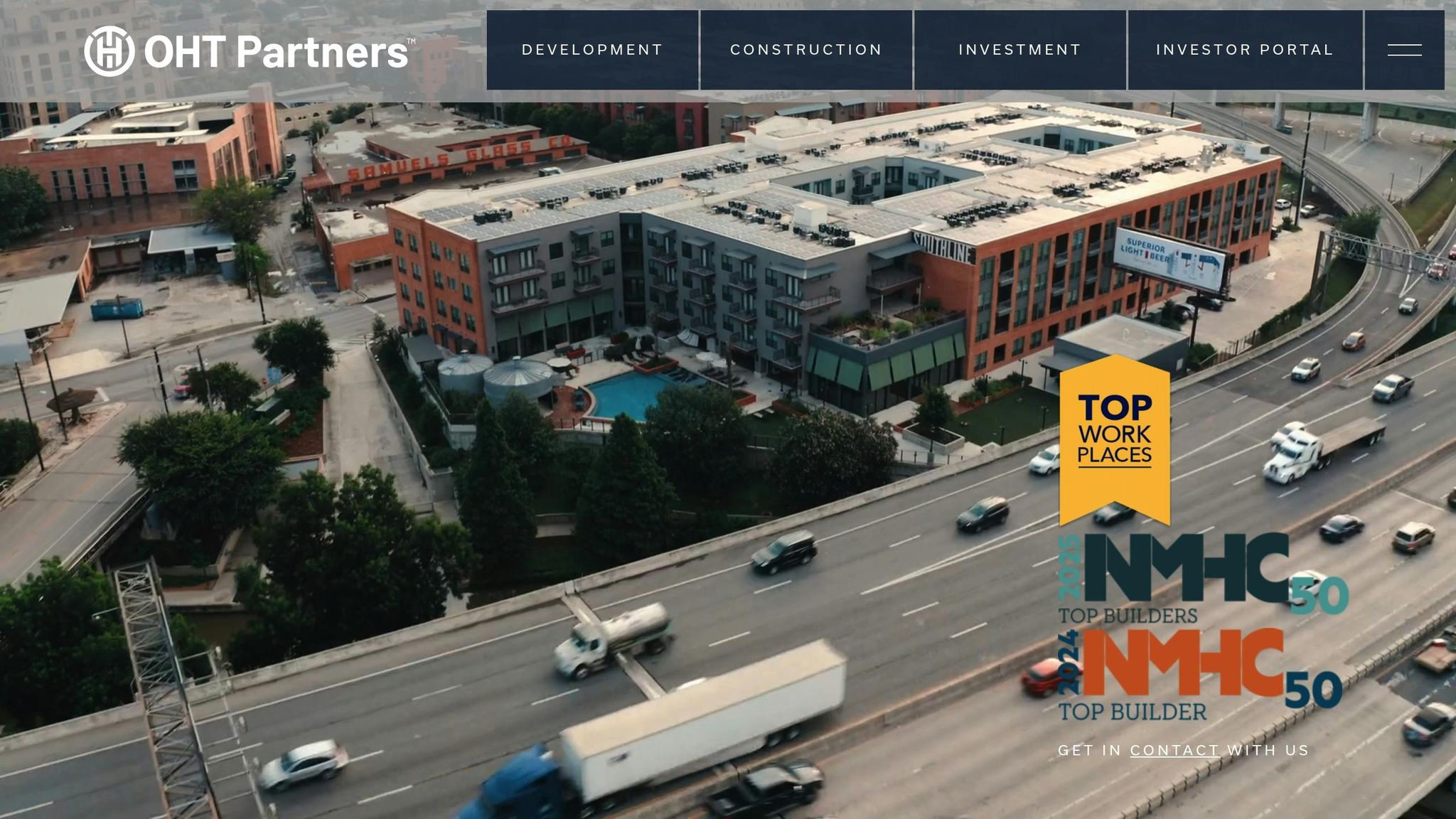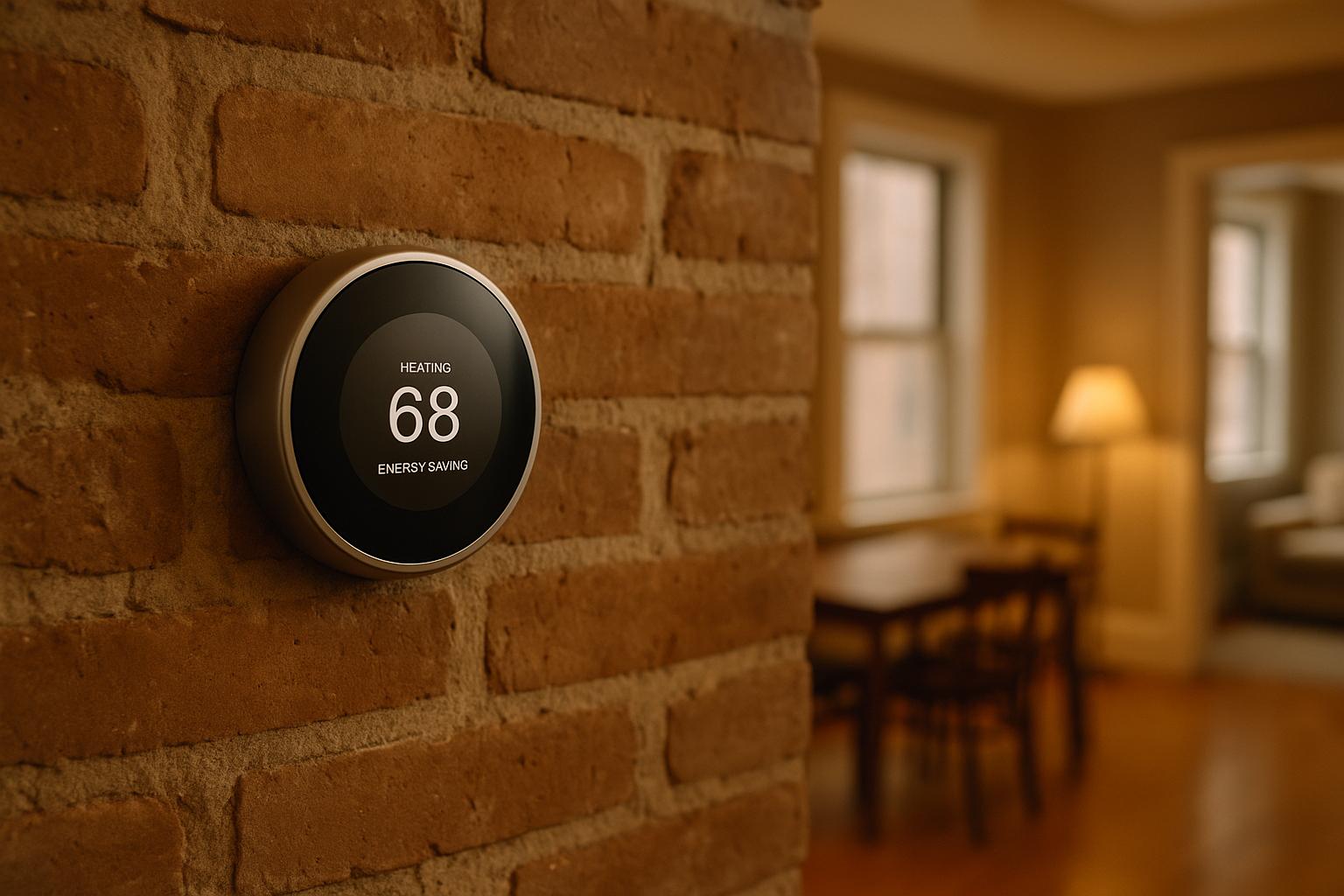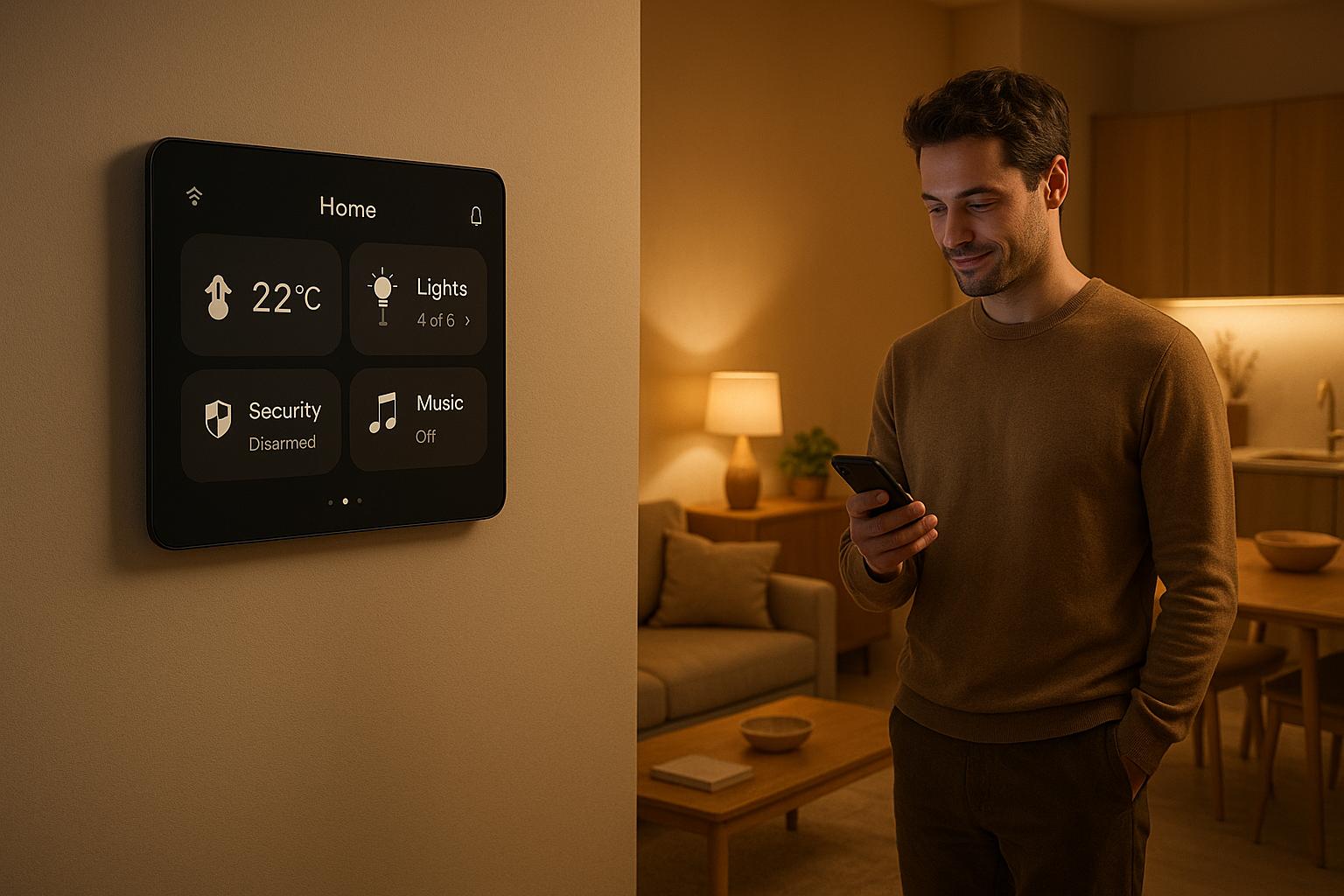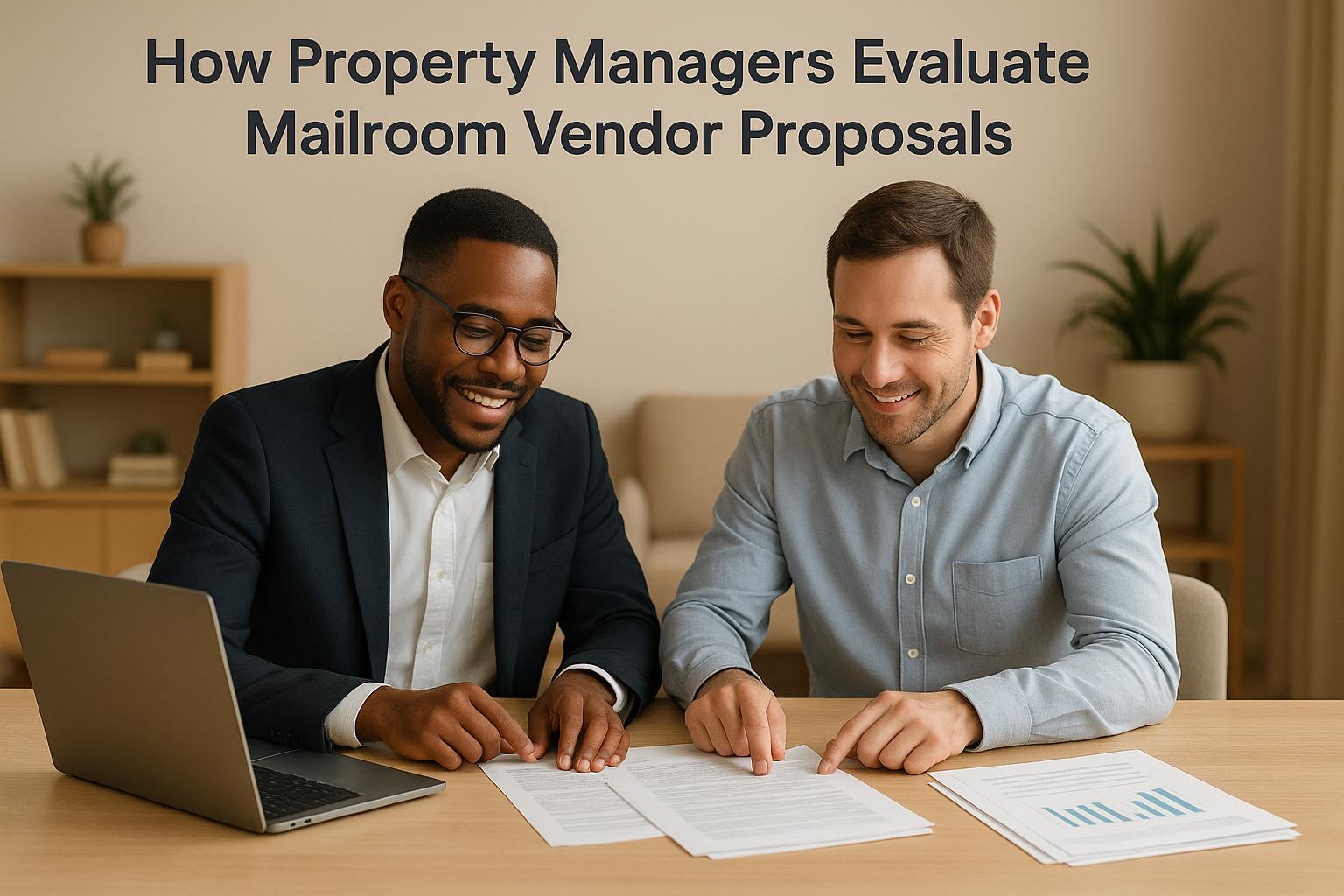When bidding on large multifamily property renovations, contractors face stiff competition, winning only about 1 in 5 bids. The process involves careful planning and collaboration with property and asset managers to meet quality, timeline, and budget expectations. Here's a quick breakdown:
- Property Managers prioritize minimizing disruption to residents and maintaining daily operations during renovations.
- Asset Managers focus on long-term property value, profitability, and investor reporting.
Key Steps in the Bidding Process:
- RFP Issuance: Owners release detailed project requirements.
- Site Visits: Contractors assess the property, identify challenges, and gather data for accurate bids.
- Bid Submission: Includes cost breakdowns, timelines, and credentials.
- Bid Review: Property managers use bid leveling to compare proposals based on cost, experience, safety, and scheduling.
What Property Managers Evaluate:
- Meeting RFP requirements (e.g., costs, timelines, and deliverables).
- Past experience, references, and safety records.
- Financial stability to ensure project completion.
How Contractors Can Win Bids:
- Conduct thorough site visits and use technology for precise estimates.
- Provide clear, detailed proposals tailored to client needs.
- Highlight past successes, strong safety records, and financial reliability.
Winning bids balance competitive pricing with quality, ensuring long-term benefits for property owners and tenants.
Tim Griggs, Director of Estimating at OHT Partners (MULTIFAMILY SPECIAL)

Steps in the Bidding Process
The bidding process for large capital projects at multifamily properties follows a structured path designed to ensure fair competition and thorough evaluation. Understanding each step helps contractors position themselves effectively, while property managers can identify proposals that deliver the best value. Each phase plays a key role in maintaining transparency and accuracy.
RFP Issuance and Bid Solicitation
The process begins with the formal release of project requirements, typically through an Invitation for Bid (IFB), Request for Quote (RFQ), or Request for Proposal (RFP) [1]. Some owners may limit invitations to select contractors, while public housing authorities often open the process to all qualified bidders. The bid package lays out crucial project details, including construction specifications, contract type, project delivery method, and bonding and insurance requirements. These details ensure contractors can prepare accurate and competitive bids [1].
Site Visits and Pre-Bid Activities
Site visits are a pivotal step in the bidding process. As Jack Cookson from BuildZoom explains, "One of the most important parts of picking a contractor or architect for your real estate project is the site visit" [2]. These visits allow contractors to take precise measurements, identify potential challenges, and understand the property’s unique characteristics. During the visit, contractors evaluate spaces, inspect existing systems, and discuss preliminary plans. These observations help sharpen their proposals. Following up with an email summarizing notes and outlining next steps can leave a strong, professional impression.
Bid Submission and Review Process
Once site visits are complete, contractors compile their findings into detailed bid submissions. These submissions typically include timelines, cost breakdowns, and contractor credentials [1]. For complex systems, general contractors may also gather bids from specialized subcontractors. Key elements like bid bonds and comprehensive estimates are included to meet project requirements.
After submissions are received, property and asset managers review them through a process called bid leveling. This ensures bids, often presented in varying formats, are standardized for fair comparison. While government-owned properties may be required to choose the lowest bid, private multifamily owners often consider additional factors like project experience, safety records, and scheduling approaches. The review process concludes with contractor selection and contract negotiations, where final terms and pricing are refined to align with project goals [1]. This step ties back to the careful groundwork laid at the start of the process.
What Property Managers Look for in Proposals
When property managers evaluate proposals, they rely on specific criteria to identify the best candidates for their projects.
Meeting RFP Requirements
A winning proposal starts with meeting every requirement outlined in the Request for Proposal (RFP). This means addressing costs, timelines, deliverables, and payment terms in detail [7][5].
Mistakes like calculation errors, unrealistic pricing, or skipping a site visit can lead to immediate disqualification [6]. JD Summa emphasizes the importance of site visits:
"Walk the jobsite. How large is the jobsite? How are you going to phase the project? What are you going to use for staging? If it's a very small site, but we're going vertical, do we need cranes? Are you on a very busy road? Do you need police to shut down the road? Do you need special permits?" [6]
Contractors should also clearly outline exclusions, assumptions, and deadlines for material pricing [6]. While technical compliance is essential, property managers also look for contractors with a proven track record and reliability.
Past Experience and References
Beyond meeting the RFP requirements, property managers give significant weight to a contractor's past experience. Proposals are more compelling when they showcase relevant multifamily project experience, especially for jobs of similar size and complexity [8]. Strong references from previous projects further demonstrate the contractor's ability to deliver results.
For example, Gates Hudson's renovations at Parc View in Arlington, VA, boosted net rent potential by 20%, while their work at Haven Mount Vernon in Alexandria delivered a 16.3% annualized return [3]. Property managers often verify such claims by directly contacting references, asking about project timelines, budget management, and how challenges were handled.
Safety Records and Financial Stability
Safety is a top priority in construction projects due to the inherent risks [9]. Contractors with strong safety records are preferred, as poor safety practices can lead to accidents, delays, and additional costs like medical expenses or legal fees [9][10]. As one expert puts it:
"Safety in Commercial Construction Projects is not just a requirement; it is a responsibility that impacts every aspect of a project, from worker well-being to project delivery." [9]
A history of safety incidents or non-compliance with OSHA regulations can result in work stoppages and fines, making safety performance a critical evaluation factor.
Financial stability is equally important. Contractors need to demonstrate they can complete projects without financial setbacks, ensuring continuity and reducing the risk of abandonment [11]. Additionally, a strong safety record can lead to lower insurance premiums, giving contractors a competitive edge in pricing [9].
To ensure fairness, property managers often use grading rubrics that balance both qualitative factors - like safety records and communication skills - with quantitative measures such as pricing and timelines [4]. This thorough evaluation process helps property managers select contractors who can deliver high-quality projects safely, on schedule, and within budget, all while meeting multifamily standards.
sbb-itb-58157f8
How to Prepare Competitive Bids
Securing large CapEx projects goes beyond offering the lowest price. Contractors need a well-thought-out strategy that showcases their understanding of the project, uses technology for precision, and delivers proposals that directly address the client’s needs.
Review RFPs and Conduct Site Visits
Start by carefully analyzing the RFP to fully understand the project’s scope, location, construction type, and any specific client requirements [13]. Pay close attention to the scope of work, which outlines details like methods, materials, equipment, and labor needs [13]. This step helps identify potential challenges and ensures all project requirements are accounted for.
Site visits are equally important for confirming existing conditions and improving bid accuracy [12]. These visits allow contractors to assess whether they can meet the project’s demands based on real-world observations [12]. During the RFP review, don’t overlook key clauses related to payment, insurance, and dispute resolution [13]. If anything seems unclear, seeking legal advice can help avoid costly misunderstandings down the line [13].
To take this process a step further, integrating technology can help refine these assessments, making your estimates both accurate and competitive.
Use Technology for Accurate Estimates
Modern estimating software has revolutionized preconstruction tasks by automating calculations and minimizing errors [14]. Research has shown that manual spreadsheets are prone to mistakes, making automation a critical tool for accurate estimates [16]. These tools centralize project data, streamline processes, and reduce human error.
Real-world success stories show the impact of digital tools. For instance, DPR Construction uses Autodesk Construction Cloud to seamlessly integrate 2D and 3D workflows, boosting collaboration and ensuring precise project scope quantification [16]. Similarly, Windover Construction has cut estimating time by as much as 30% and reduced quantity takeoff time by over 50% through digital takeoffs [16]. Carroll Estimating has also benefited, completing tasks like identifying and quantifying door types in just minutes instead of hours [16].
When choosing construction estimating software, prioritize features like customizability, integration with other tools, user-friendly interfaces, and strong customer support [14]. Cloud-based platforms are particularly useful for real-time collaboration and instant updates as project details evolve [15]. Additionally, AI-powered tools can analyze historical project data to uncover cost trends and potential risks [15].
Once you’ve nailed down accurate estimates, the next step is creating a clear and compelling proposal.
Write Clear and Detailed Proposals
A well-structured proposal not only sets expectations but also builds trust [17]. Tailor each proposal to align with the client’s specific needs, property type, and any unique challenges they face.
To keep your proposal engaging, use bullet points, clear headings, and plenty of white space. Aim for a concise document, ideally four to six pages, to maintain the reader’s attention [17].
Transparency is key when it comes to costs. A detailed breakdown of expenses helps illustrate the value you bring, especially in a market where supply prices can fluctuate [13]. Highlight your experience and expertise by including examples of similar projects, client references, and any certifications that set you apart [13].
End your proposal with a direct call to action, such as scheduling a follow-up meeting [17]. This makes it easy for clients to take the next step in the decision-making process.
How Winning Bids Are Selected
Property managers carefully evaluate bids by balancing project costs with quality to ensure successful outcomes. Here's a closer look at how they standardize criteria and prioritize value to make their final decisions.
Bid Comparison and Standardization
One of the most effective tools property managers use is bid leveling - a structured process that breaks down proposals into key components like materials, labor, timelines, and quality standards. This method helps them focus on overall value rather than simply picking the lowest bid [18].
The process starts with defining a clear scope of work, reviewing bids systematically, and using a standardized comparison sheet to assess proposals beyond just their price tags [18]. A bid leveling sheet is central to this process, offering a detailed breakdown of each proposal. Here's an example of what this might look like:
| Evaluation Criteria | Contractor A | Contractor B | Contractor C |
|---|---|---|---|
| Total Project Cost | $485,000 | $520,000 | $465,000 |
| Timeline (weeks) | 12 | 10 | 14 |
| Years of Experience | 15 | 8 | 20 |
| Safety Rating | Excellent | Good | Excellent |
| References Provided | 5 | 3 | 6 |
| Warranty Period | 2 years | 1 year | 3 years |
This structured format allows property managers to compare bids side by side, considering not just costs but also the experience, safety ratings, and warranties offered by each contractor [18][19]. Many now use digital tools to streamline this process, ensuring accuracy and efficiency. Contractors, in turn, are expected to present their proposals clearly, highlighting their expertise, reliability, and ability to meet deadlines [18][19].
Price vs. Added Value
While cost plays a role, property managers know that the cheapest option isn’t always the smartest choice. Instead, they use a best value selection approach, which weighs both cost and qualitative factors to ensure a project’s long-term success [20]. This method prioritizes elements like experience, innovation, and scheduling alongside price.
Danica Mason, Principal at Red Team Go, explains it well:
"The reason we see best value selection frequently used is primarily for collaborative delivery projects. This approach allows owners to leverage innovation, scheduling and cost considerations effectively." [20]
To avoid falling into the trap of selecting unrealistically low bids, property managers often limit price to just 10–30% of the total evaluation score. They also favor graduated pricing over an all-or-nothing approach [20]. Contractors who bid aggressively low without a clear execution plan are scrutinized carefully, as these bids often lack feasibility. Experts suggest that providing a detailed financial breakdown not only demonstrates a contractor's thought process but also builds trust in their ability to deliver [19].
Some evaluation methods go beyond comparing numbers. Structured interviews or work sessions are often used to gauge a contractor’s collaboration skills - an important factor for large-scale projects [20]. Selecting the right contractor doesn’t just ensure the project itself goes smoothly; it can lead to better tenant satisfaction, fewer unexpected costs, and stronger property performance overall. A well-thought-out selection process also sets the stage for effective teamwork from the very beginning [20][21].
Key Takeaways for Contractors and Property Managers
Handling large CapEx bidding requires careful planning from both contractors and property managers. A solid approach can make the difference between a successful project and costly errors.
For contractors, success begins with thorough preparation and accurate cost assessments. As Kendall Jones wisely points out:
"The bottom line is if you can't make a profit on a project, you have no business bidding on it in the first place." [23]
Conducting detailed site visits is a must to fully grasp the project's complexity, staging needs, and possible challenges. Early in the process, contractors should also focus on understanding what matters most to the client - whether that's keeping initial costs low, cutting long-term expenses, or ensuring reliability. Challenging project scopes early on can uncover potential savings and streamline workflows [24]. Additionally, including acceptance deadlines in bids is critical since material pricing often comes with time limits from suppliers [6].
For property managers, choosing a vendor involves more than just going with the lowest bid. Phillip Sampson Jr., an attorney at Bracewell LLC, emphasizes:
"Owners today are more likely to evaluate bids for overall quality rather than just low price. Having confidence that the bid is honest and realistic is very important, especially on large, meaningful projects." [6]
Key steps in the evaluation process include setting clear performance standards, checking vendor references, and verifying their reputation within the industry [26]. Bruce Baker, CCIM, President of Baker Realty Advisors, highlights what clients value most:
"Hands-on management, a simplified monthly reporting process, quick response to client requests and concerns, and a willingness to adapt reporting and management practices to provide specific services are what clients often look for." [25]
To steer clear of common mistakes, both contractors and property managers should avoid pitfalls like inaccurate cost estimates, incomplete documentation, and poor risk management [22]. With 70% of construction bids failing to secure contracts [27], contractors need to ensure their documentation is precise, while property managers must avoid basing decisions solely on price - especially if credentials, insurance, or written agreements haven't been verified [28].
Ultimately, successful partnerships depend on contractors finding ways to reduce CapEx without compromising quality, while property managers prioritize thorough evaluations to balance cost and long-term value [24]. These strategies ensure every bid delivers both financial efficiency and lasting results.
FAQs
What challenges do contractors often encounter during site visits for multifamily renovation projects?
Contractors often encounter a variety of hurdles during site visits for multifamily renovation projects. These can range from hidden structural problems, like concealed damage or the use of outdated materials, to aging plumbing and electrical systems that don't align with current building codes. On top of that, weather-related delays and supply chain issues can throw off project timelines, while zoning laws and regulatory requirements may create additional, unforeseen obstacles.
Dealing with these challenges typically demands swift decision-making and adjustments to the project plan, which can ripple through both the budget and schedule.
How do property managers choose contractors for large CapEx projects while balancing cost and quality?
Property managers juggle cost and quality by emphasizing careful planning and smart cost management during major CapEx projects. They assess contractor bids by considering factors like pricing, project timelines, and the contractor’s ability to deliver top-notch results. Clear communication and well-detailed proposals play a crucial role in aligning expectations and avoiding misunderstandings.
When choosing contractors, property managers often lean toward those with a reputation for reliability, openness, and a proven history of completing similar projects on schedule and within budget. This method not only helps maintain the property’s value over time but also ensures financial goals are met.
How does technology help contractors create accurate and competitive bids for multifamily property renovations?
Technology has become an essential ally for contractors aiming to create accurate and competitive bids for multifamily renovation projects. Tools powered by AI and machine learning simplify cost estimation by digging into past project data, spotting patterns, and setting reliable benchmarks. They also factor in critical variables like location, material prices, and project size, helping reduce mistakes and sharpen precision.
Beyond cost estimation, technology enhances resource planning, flags potential risks, and allows for real-time adjustments to bids. This adaptability helps contractors remain competitive while saving time and boosting efficiency - all of which can significantly improve their chances of securing large-scale renovation contracts.


